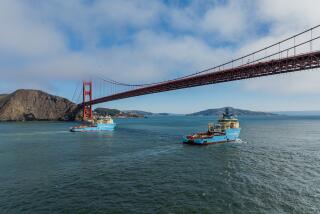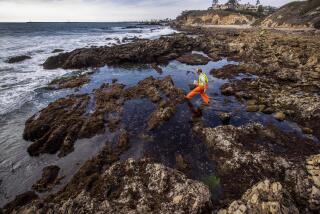Coast Guard Chief ‘Encouraged’ by Exxon’s Plan to Clean Up Oil
- Share via
VALDEZ, Alaska — The commander of the Coast Guard said Saturday that he was “encouraged” by Exxon’s plan to clean up vast stretches of oil-stained shoreline overrun by the nation’s worst oil spill.
The plan was reviewed as the spill spread its tentacles in several directions, forcing the closure of a herring fishery and raising fears that bears would be poisoned by oil-tainted animal carcasses in Katmai National Park.
Despite the grim reports, Coast Guard Commandant Paul Yost emerged from a meeting with Exxon officials saying he was optimistic about the long-awaited plan.
“It appears to be a piece of work that’s well thought out, scientifically and operationally, and I’m very encouraged,” said Yost, who has predicted that the cleanup would extend through the summer.
Yost said he would not approve the 20-page plan until he had examined it over the weekend, and thought it likely would take two or three weeks to fully implement.
The logistics for the cleanup will be staggering. The 44 crucial sites selected by the state for immediate action have at least 240 miles of often rugged shoreline, and there are about 3,000 rocky beaches tainted by oil.
The military said it had decided to send in more helicopters and two Navy vessels to house workers.
Meanwhile, fishing boats carried makeshift barriers toward the oil-fouled coast of Katmai National Park.
Shifting winds threatened to push balls of tar-like sludge toward Homer and other Cook Inlet communities, and the herring fishery at the north end of Kodiak Island was closed for fear of contamination.
Battles were waged on various fronts, some of them hundreds of miles from where the tanker Exxon Valdez ran aground March 24 and spilled 10.1 million gallons of oil.
More to Read
Sign up for Essential California
The most important California stories and recommendations in your inbox every morning.
You may occasionally receive promotional content from the Los Angeles Times.












